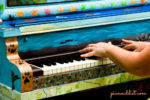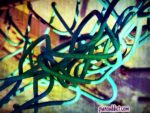Creativity & Method
I was pursuing the old inter-web this morning and came across an interview with Montreal pianist, André Laplante. In it Mr. Laplante touches on the difference between piano performance and art. He bemoans technique over artistry and describes himself as squirming in his seat as a juror in the 1994 Tschaikowsky Competition because “there was lots of doing- but music…” (the journalist suggests a Gallic shrug here). He is described as encouraging a goal, at all levels, of accepting the higher challenge of getting music from sound rather than just getting sound out of the piano.
There was also a distinct dissing of piano methods from Mr. Laplante who seemed to feel them too corporate and divorced from artistry. I disagree. Sorry all you authors out there, but method books are tools and nothing more. Sorry all you teachers out there, but if method books are resulting in a divorce from artistry, the fault it is how these tools are being used. It all comes down to using the tools you are given creatively. Methods are not uni-taskers!
I spend a lot of time in my preparation for teaching, workshops, and writing on the possibilities of method books- in other words, using a method creatively. Publishers and authors don’t tell you this kind of stuff during conference sessions or in teacher guides where the emphasis is on the concepts and skills contained in each level.
Method books are fabulous at helping prepare students for intermediate literature. They are elementary musical gold mines. Transition is the issue. To effect positive transitions from methods to repertoire to artistic performance we need to creatively understand the possibilities of method books- we need to think out of the lines my friends.
Do we as teachers see where the road ahead leads? Are we asking ourselves how what we are teaching today forms the basis for learning that Jazz piece or that Baroque dance, for producing that magical, artistic performance, or for creating that improvisation or original composition? Are we observing each student’s unique personal characteristics and teaching first to that perspective? Are we using the tools we have been given in a creative manner?
in future posts, I will detail examples of ways in which methods can be used creatively to prepare students for advancing literature. It is not my intention to compare methods or to endorse any particular method. I hope that looking at examples from the first two levels of various lesson books will help you think out of the lines and consider method books in a fresh, creative way.
Here’s to <re@t!v!ty I was forced to put this here at the end of the post because WordPress decided that if I was going to be creative in my title it would just not include it. How very in the lines of them.
Here’s some more food for thought from Newsweek, The Creativity Crisis.


